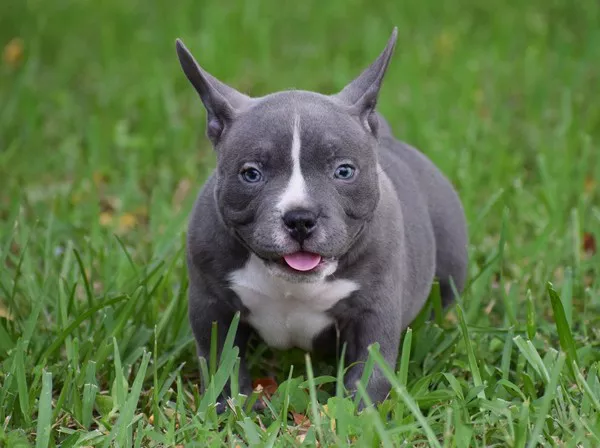Introduction
In the world of dog enthusiasts, the term “XL Bully” has gained substantial attention over the past decade. These majestic canines have captivated the hearts of many with their imposing appearance, endearing temperament, and unique lineage. However, there remains some confusion surrounding their origins, breed classification, and specific characteristics. In this article, we delve into the fascinating world of the XL Bully, shedding light on their history, defining their breed, and exploring their notable traits.
1. The Genesis of XL Bully
The XL Bully’s journey begins in the United States during the late 20th century. It’s crucial to understand that the term “XL Bully” is not a recognized breed within major kennel clubs, such as the American Kennel Club (AKC) or the United Kennel Club (UKC). Instead, it represents a category of American Bully dogs that exhibit a particular size and appearance.
In essence, the XL Bully is a result of selective breeding among various bully breeds, including the American Pit Bull Terrier, the American Staffordshire Terrier, and the English Bulldog. Breeders sought to create larger and more muscular dogs while maintaining their friendly and amiable disposition. Over time, these efforts culminated in the development of the XL Bully we know today.
2. Defining the XL Bully
The XL Bully, as the name suggests, is a canine of considerable size and substance. Typically weighing between 70 to 120 pounds and standing around 20 to 23 inches at the shoulder, these dogs command attention with their impressive build and robust frame. While they share some characteristics with their Pit Bull and Bulldog ancestors, they also exhibit unique features that set them apart.
3. Physical Attributes
Muscular Build
The XL Bully is renowned for its powerful and muscular physique. Their broad chest, well-defined shoulders, and thick neck contribute to their imposing appearance. Despite their robustness, these dogs maintain a graceful and agile demeanor.
Head Structure
One of the most striking features of the XL Bully is its distinct head structure. Their broad, square-shaped heads are complemented by a short, well-defined muzzle and a strong jawline. Their expressive eyes, often almond-shaped, exude intelligence and warmth.
Coat and Colors
XL Bullies typically boast short, smooth coats that require minimal grooming. They come in various colors and patterns, including brindle, fawn, blue, black, and tri-color. Breed standards do not prioritize a specific color, allowing for a diverse and vibrant range of appearances.
4. Temperament and Personality
Despite their intimidating appearance, XL Bullies are renowned for their friendly and affectionate nature. They often form strong bonds with their families, displaying unwavering loyalty and protective instincts. Their loving and gentle demeanor makes them excellent companions, particularly for families with children. Early socialization and training are essential to ensure their interactions with other animals and strangers remain positive.
5. Caring for an XL Bully
Nutrition and Diet
Due to their large size and muscular build, XL Bullies require a balanced and nutritious diet. High-quality dog food rich in protein is essential to support their muscle development and overall health. It is crucial to consult with a veterinarian to determine the appropriate portion sizes and dietary requirements based on the dog’s age, weight, and activity level.
Exercise and Physical Activity
XL Bullies are moderately active dogs that enjoy regular exercise and playtime. Daily walks and interactive play sessions are necessary to keep them mentally and physically stimulated. Engaging in activities like fetch, agility training, or obedience exercises can also help foster their intelligence and strengthen the bond between dog and owner.
Grooming
Fortunately, grooming an XL Bully is relatively simple. Their short coat requires minimal brushing, making them a low-maintenance breed in this aspect. Regular baths and nail trims, along with routine ear and dental care, are essential parts of their grooming routine.
6. XL Bully Myths and Misconceptions
As with any popular breed, XL Bullies have faced their fair share of myths and misconceptions. It is crucial to address these misconceptions to promote responsible ownership and understanding of this magnificent breed.
Aggression
One common misconception surrounding XL Bullies is their perceived aggression. In reality, aggression is not a breed trait, and XL Bullies are not inherently aggressive. Their temperament largely depends on their breeding, socialization, and training. Responsible breeders prioritize producing well-socialized and stable-tempered puppies, thereby curbing any potential aggression.
Banned Breed
It’s essential to clarify that the term “XL Bully” itself is not a banned breed. However, due to their physical resemblance to certain restricted breeds, XL Bullies might face breed-specific legislation (BSL) in some regions. Such legislation often targets breeds like the American Pit Bull Terrier, which can lead to misunderstandings about XL Bullies. It is crucial to research local laws and regulations regarding dog breeds to ensure compliance and responsible ownership.
7. Finding a Reputable Breeder
If you’re considering bringing an XL Bully into your home, finding a reputable breeder is of utmost importance. Responsible breeders prioritize the health and temperament of their dogs, ensuring they are well-socialized and free from genetic health issues. Avoid supporting puppy mills or backyard breeders, as their practices can lead to the proliferation of poorly bred dogs with potential health and behavioral problems.
8. Conclusion
In conclusion, the XL Bully is a fascinating and captivating breed that continues to win the hearts of dog enthusiasts worldwide. Despite not being a formally recognized breed, their popularity continues to grow due to their unique appearance and loving temperament. With responsible ownership, proper care, and early socialization, XL Bullies can be outstanding companions and devoted family members, bringing joy and loyalty to their human counterparts for years to come.


